
You'll recall I've already ranted about HTC's marketing push behind the 'uFocus' feature using info from the extra 'depth' camera, which turns out to be something of a gimmick. So let's leave that aside and concentrate on the One (M8)'s main camera's sensor, optics and image processor.
Apparently the sensor has been tweaked a little since the original 'One', though the specs remain the same, plus there's now no OIS (not that this 2-axis implementation worked very well anyway) and there's a faster, improved image processor. But can any of this even get close to the photos from Nokia's flagship, the Lumia 1020?
There's only one way to find out.
NB: Although I've used our popular interactive comparator here (remember to wait for the script to load before panicking!), note that both the field of view and resolutions are slightly different between the M8 and the 1020 - which is why framings of the test photos have minor differences. You'll see these as you move your mouse or pointer across each test.
NB2: To keep things utterly fair, I deliberately didn't use any PureView lossless zoom on the 1020, everything here is unzoomed and as-is.
Test 1: Bright sunshine, perfect conditions, high detail
A local church tower, lit in the sun against a perfect sky. Here's the full scene:
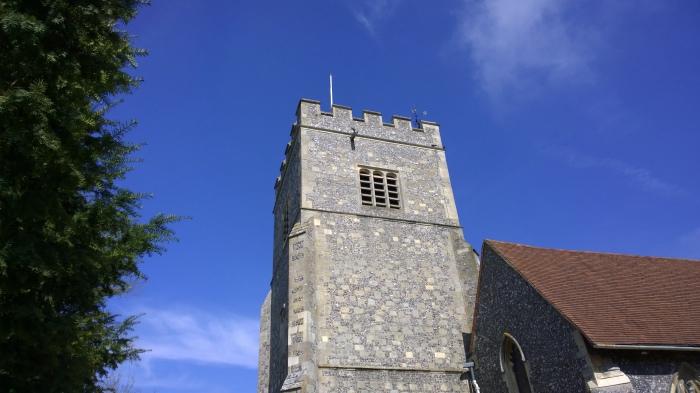
And here's our interactive comparator, looking at 1:1 crops from near the centre of each image. Use your mouse or pointer to roll over the comparator and judge quality and detail for yourself:
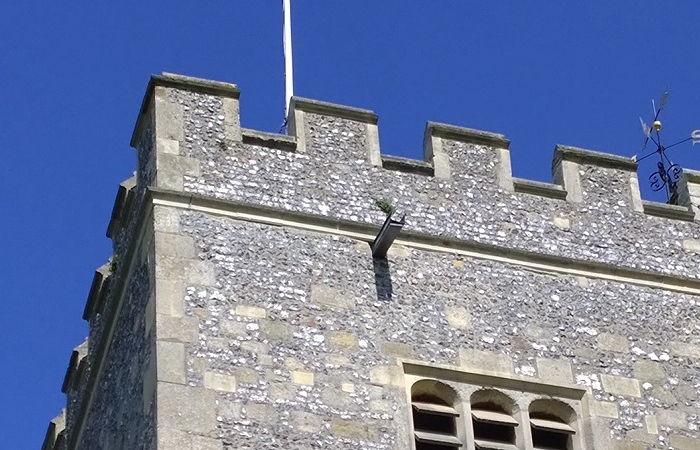
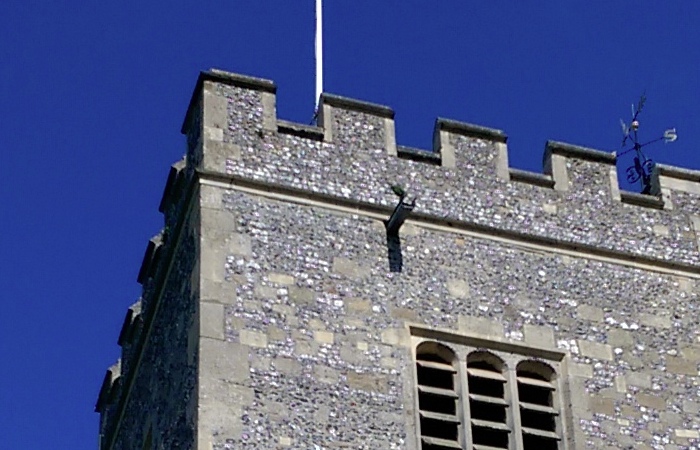
(original image JPGs: Lumia 1020, HTC One (M8))
It's very noticeable that, even though the resolutions of the two images are very similar (5MP vs 4MP), the 1020 version is much more detailed and has less artefacts. This is a theme that you'll see a lot of on this page, I suspect.
HTC's gamble with ultrapixels was that their use would reduce the amount of digital noise in photos - this it does, but at huge cost - by the time the Bayer filter and image processor have chewed through the image information from the sensor, the actual resolved detail is... disappointing.
Test 2: Inside, dim conditions, high detail
This time inside the church above, with just stained window natural lighting and masses of ornate detail, here focussing on the distant altar. Here's our interactive comparator, this time looking at the full images. Use your mouse or pointer to roll over the comparator and judge quality and detail for yourself:
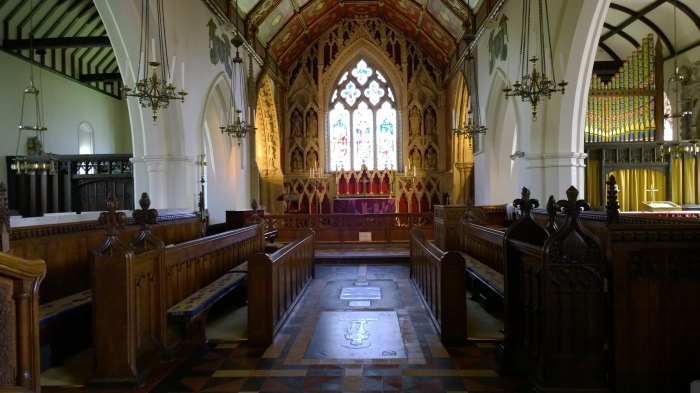
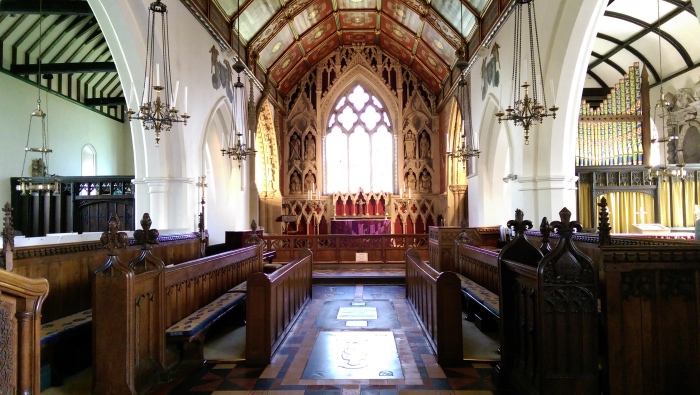
(original image JPGs: Lumia 1020, HTC One (M8))
The M8 doesn't fare too badly here, with high depth of field meaning that everything's more or less in focus, though a little over-exposed (using auto-everything for this test).
And here's our second interactive comparator for this scene, looking at 1:1 crops from near the centre of each image. Use your mouse or pointer to roll over the comparator and judge quality and detail for yourself:


To be fair, the HTC One (M8) doesn't do too badly here, once you've allowed for it overexposing anything close to the main window. There's certainly detail there at the pixel level, though not as much, or in as high quality, as that in the 1020's image.
Test 3: River scene in the sun, distant detail
Still the same lovely day, with boats in the distance that should test the purity of the 4MP/5MP to their utmost. PureView super-pixels against Ultrapixels! Here's the full scene:
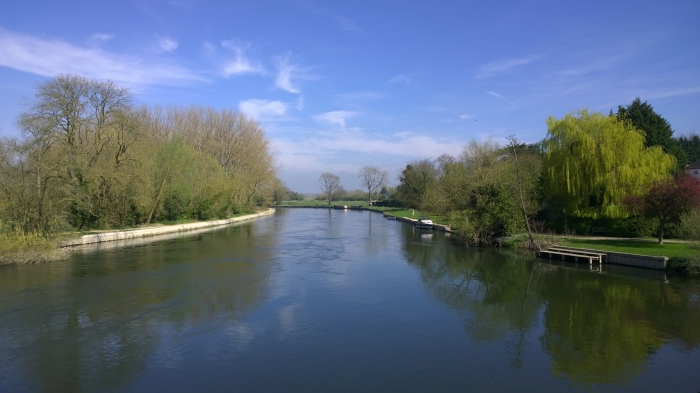
And here's our interactive comparator, looking at 1:1 crops from near the centre of each image. Use your mouse or pointer to roll over the comparator and judge quality and detail for yourself:

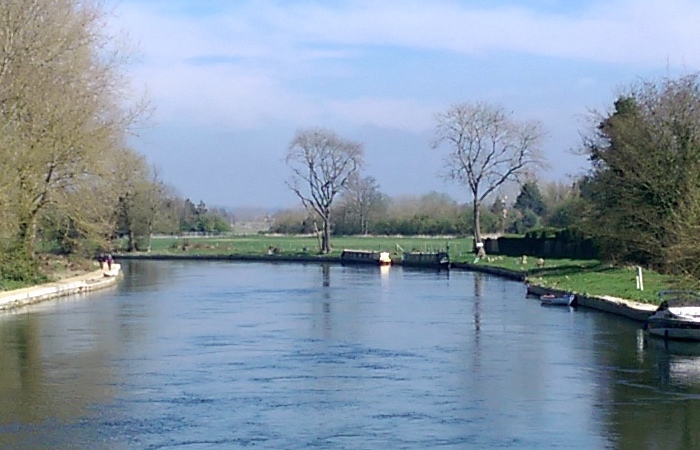
(original image JPGs: Lumia 1020, HTC One (M8))
Again, despite the similar resolutions, there's so much processing corruption at the pixel level in the M8's photo - look at the branches of the trees, look at the riverside objects. The 1020's photo looks natural, as if a viewport onto the real world. The One (M8)'s photo looks over-processed, it's very obvious that it's a photo and looks almost as if it has been scanned in from the 1020's effort on a budget scanner(!)
Test 4: Indoors, low light detail
Back inside the church, this is a great test of dynamic range, with the smartphone cameras having to struggle to pick detail from the backlit stained glass window. For each phone, I used the interface provided to reduce exposure by a full EV stop, to make sure the detail wasn't overexposed:
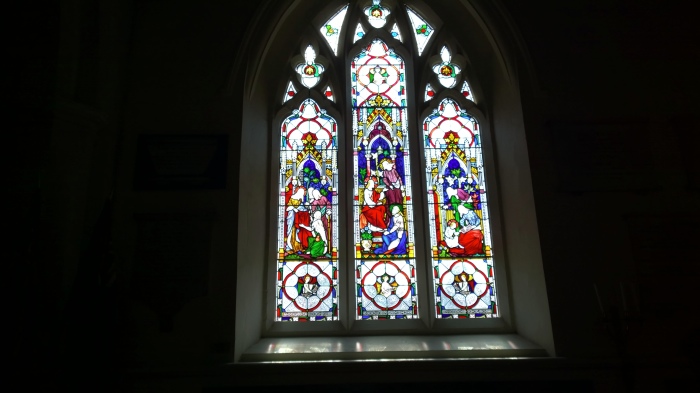
And here's our interactive comparator, looking at 1:1 crops from near the centre of each image. Use your mouse or pointer to roll over the comparator and judge quality and detail for yourself:
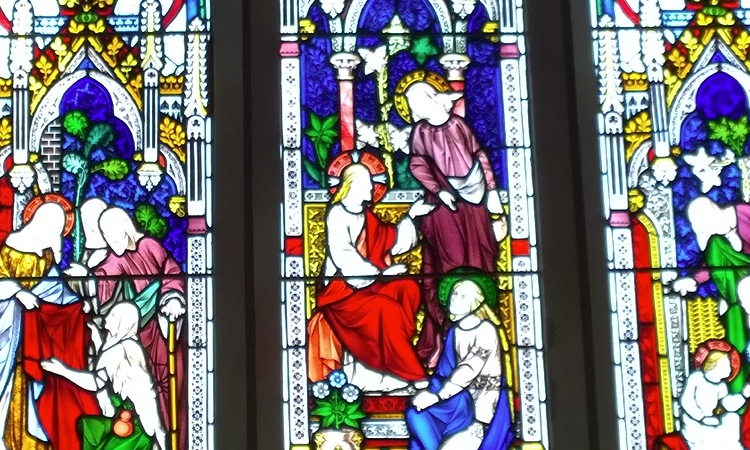

(original image JPGs: Lumia 1020, HTC One (M8))
This is perhaps the most damning of all of the M8 photos - the gap in quality and detail to the Nokia is simply enormous. With hindsight, I think the M8 exposure could have been taken down further, from -1 to perhaps -2, though it was hard to tell the difference on the phone screen, plus I wanted to keep the EV numbers the same between devices. Plus I'm not sure it would have made much difference to the result.
Test 5: Indoors, more low light detail
Still inside the church, looking at a dimly lit plaque - in reality, it looked a lot darker to my eyes than the phone cameras make it seem!
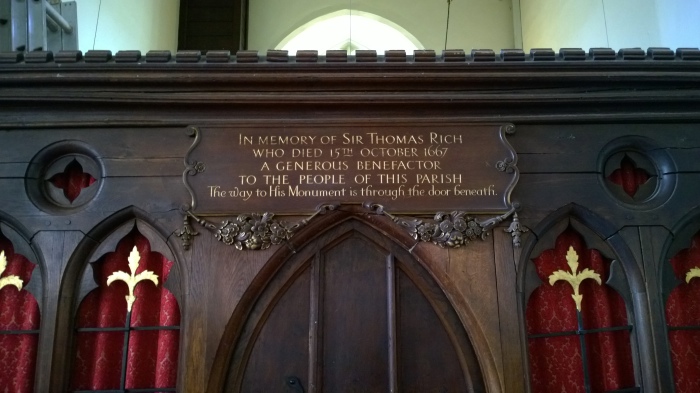
And here's our interactive comparator, looking at 1:1 crops from near the centre of each image. Use your mouse or pointer to roll over the comparator and judge quality and detail for yourself:


(original image JPGs: Lumia 1020, HTC One (M8))
The M8 camera at least gets close to the 1020's here, though there are still too many artefacts and over-sharpening, in my opinion.
Test 6: Sunshine, colour and detail
Back outside again, a picturesque house around the corner. Here's the full scene:
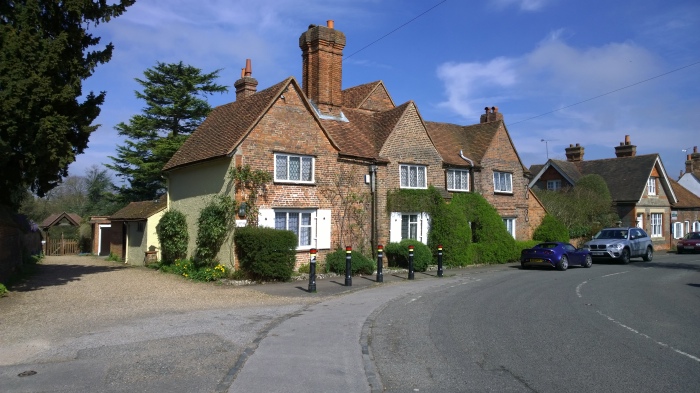
And here's our interactive comparator, looking at 1:1 crops from near the centre of each image. Use your mouse or pointer to roll over the comparator and judge quality and detail for yourself:
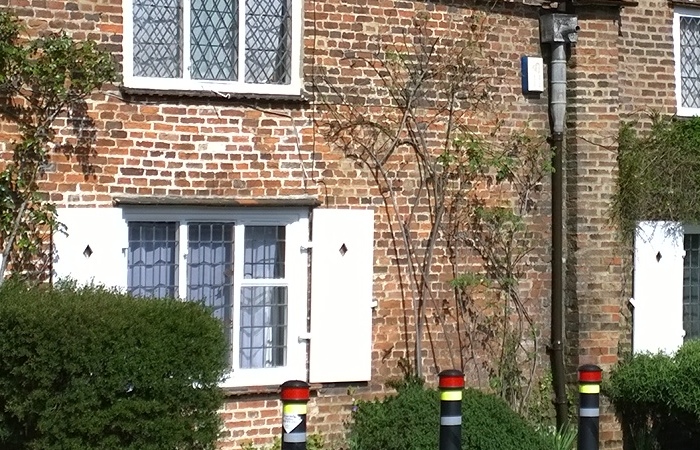
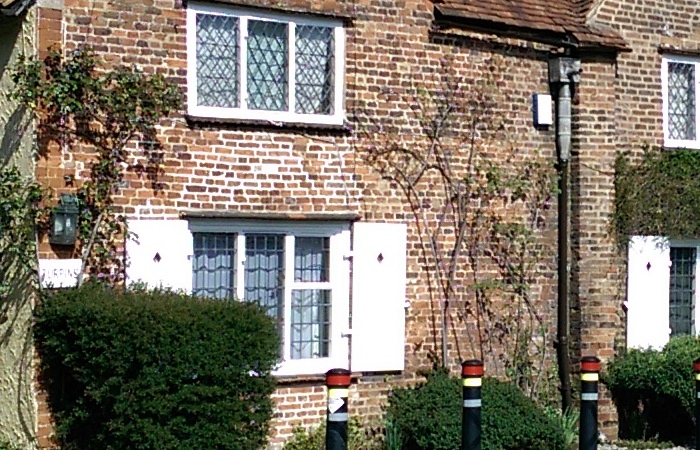
(original image JPGs: Lumia 1020, HTC One (M8))
Yet another overprocessed data point from the M8 camera and it doesn't take an eagle eye to spot the differences between these crops.
Test 7: Night time, extreme low light
Late dusk, it looked a lot darker to my eyes than the phone cameras make it seem! Here's the full scene:
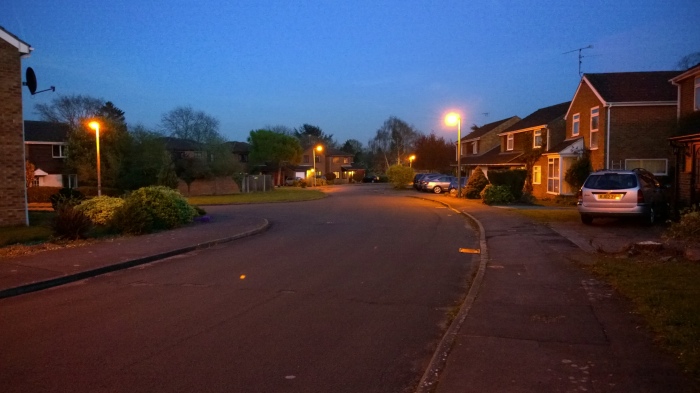
And here's our interactive comparator, looking at 1:1 crops from near the centre of each image. Use your mouse or pointer to roll over the comparator and judge quality and detail for yourself:
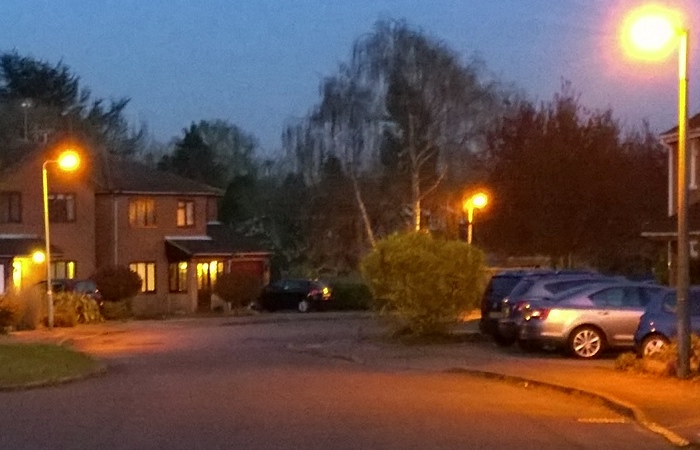
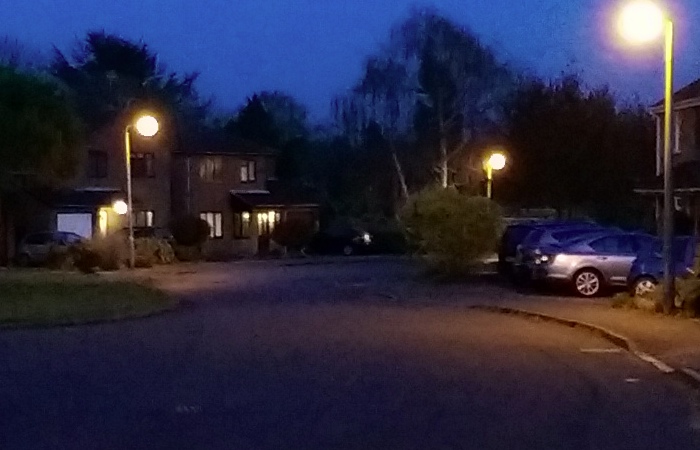
(original image JPGs: Lumia 1020, HTC One (M8))
The M8 camera doesn't do too badly, considering how dark it was (and the M8 more accurately represents the light levels), but it doesn't get close to the Lumia 1020's level of cleanliness, detail or colour.
Test 8: Party time!
My traditional (and much parodied on Twitter, apparently!) mock-up of a party scene. An amateur taking the photo (family member!), me trying to pretend to drink and dance at the same time. Movement everywhere, in very low light. This is the full scene, as lit by the bright Xenon bulb in the 1020:
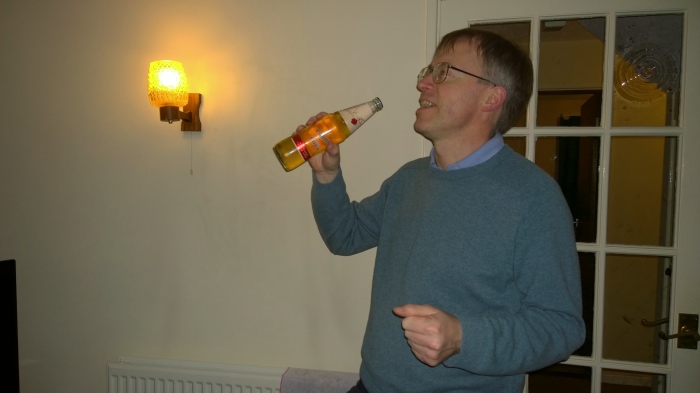
And here's our interactive comparator, looking at 1:1 crops from near the centre of each image. Use your mouse or pointer to roll over the comparator and judge quality and detail for yourself:
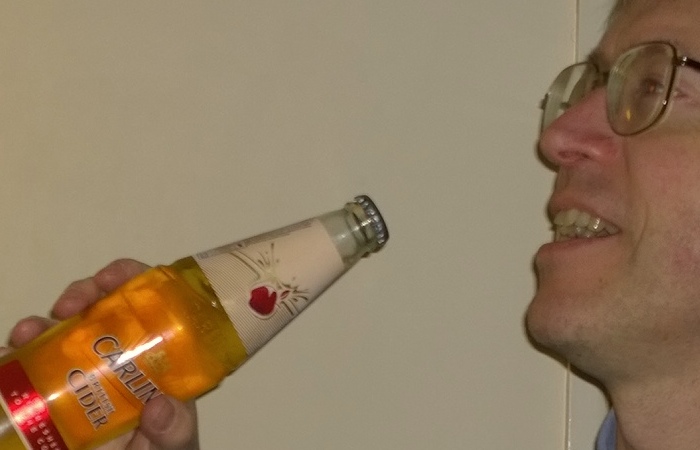
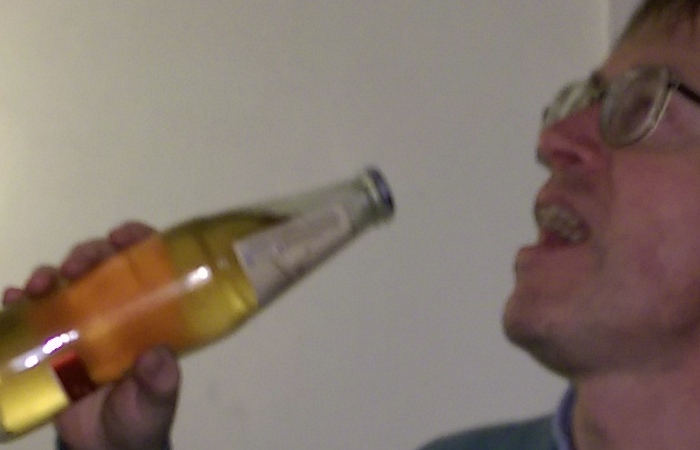
(original image JPGs: Lumia 1020, HTC One (M8))
There's little point in me moaning about the M8's result here, since every other LED-flash-using smartphone on the planet would be as bad, or worse. This is about proper (Xenon) flash versus LED and you can see the massive difference for yourself. Quite why Xenon isn't used more on smartphones remains an utter mystery to me.
Test 9: Moderate light macro
Trying to get close up to the eagle figurine. In this case, just the photos themselves, 1020 first and then M8:
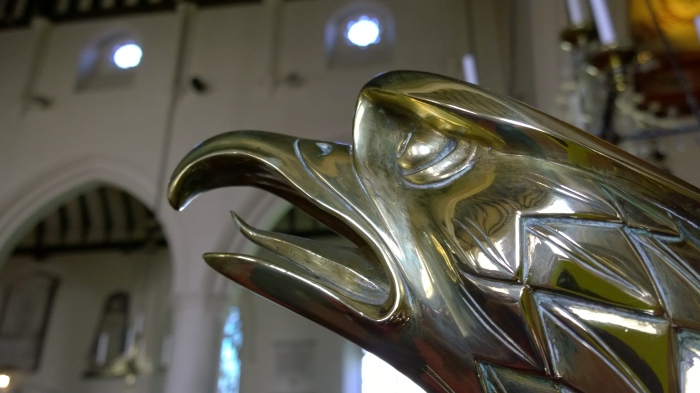

(original image JPGs: Lumia 1020, HTC One (M8))
Both phones did pretty well again. though the Lumia 1020's has more character, partly due to the extra colour in the eagle and also due to the larger optics generating a smaller depth of field, so there's more of an isolating 'bokeh' effect.
Note that, for this shot only, I had to (very slightly) break my rule about not using PureView zoom on the 1020 because the larger optics prevent it from getting quite as close 'optically' for macro shots. So the technique is to use the lossless zoom (up to 3x, but I only needed about 1.2x here) and hold the phone at the closest distance for which you can still get a focus lock.
Summary
As regular readers will know, there's a lot that goes on when taking a photo on a camera phone. Optics, Sensor quality and resolution, the (Bayer) processing of the alternating RGB pixels in order to construct a detailed colour photo, oversampling (if appropriate), image processing to reduce noise, and so on. It's not clear yet whether the HTC One (M8)'s sensor is simply not good enough or whether the problems are in the image processing. I suspect a bit of both.
The fundamental 'ultrapixel' approach must have seemed like a good idea at the time, but 4MP works out to (and I'm simplifying horribly here) around 1.3MP each of Red, Green and Blue, from which the Bayer filter works to create something with original definition. In other words, the core resolution of the M8 camera can be more like 1.3MP, depending on subject, partly explaining why the crops above are so disappointing. In contrast, other phone cameras have much higher nominal resolutions (8MP, 13MP, 21MP, 38MP, etc.), so there's plenty of overhead in the detail department, even after breaking down the captured image via RGB.
Secondly, image processing. To be fair, the 1020's camera itself has improved markedly with successive firmware updates - which is good news for HTC. Some clever firmware upgrading and the M8's camera could be a lot better.
In time. It took the 1020 a year to get to this point, so don't hold your breath for HTC. It's interesting that other cross-device camera comparisons (e.g. here) involving the HTC One (M8) have resulted in a slightly better showing for the device. At the moment, I'd disagree with the linked piece and put the M8 below the likes of the iPhone 5S and Galaxy S4 camera, but again a future software update here might work wonders to level the playing field.
With the Android and iOS competition, at least. The Nokia Lumia 1020 here, sporting Lumia Black, is clearly in a completely different league in terms of phone camera image quality. Not just to the M8, but to everything else on current platforms.
PS. As HTC One (M8) fans will attest, and rightly so, there's more to mobile photography than just the raw quality of the images - it all depends on what you want to do with a smartphone camera. The M8 is incredibly fast at shooting (many frames per second), plus there's the 'shoot-before-you-press' Zoe mode that works so well for burst image batches. Add in a load of (rather gimmicky) effects amd the M8 is still clearly positioned to suit the man in the street quite well - for much the same reasons that the photo purist will spurn it.
